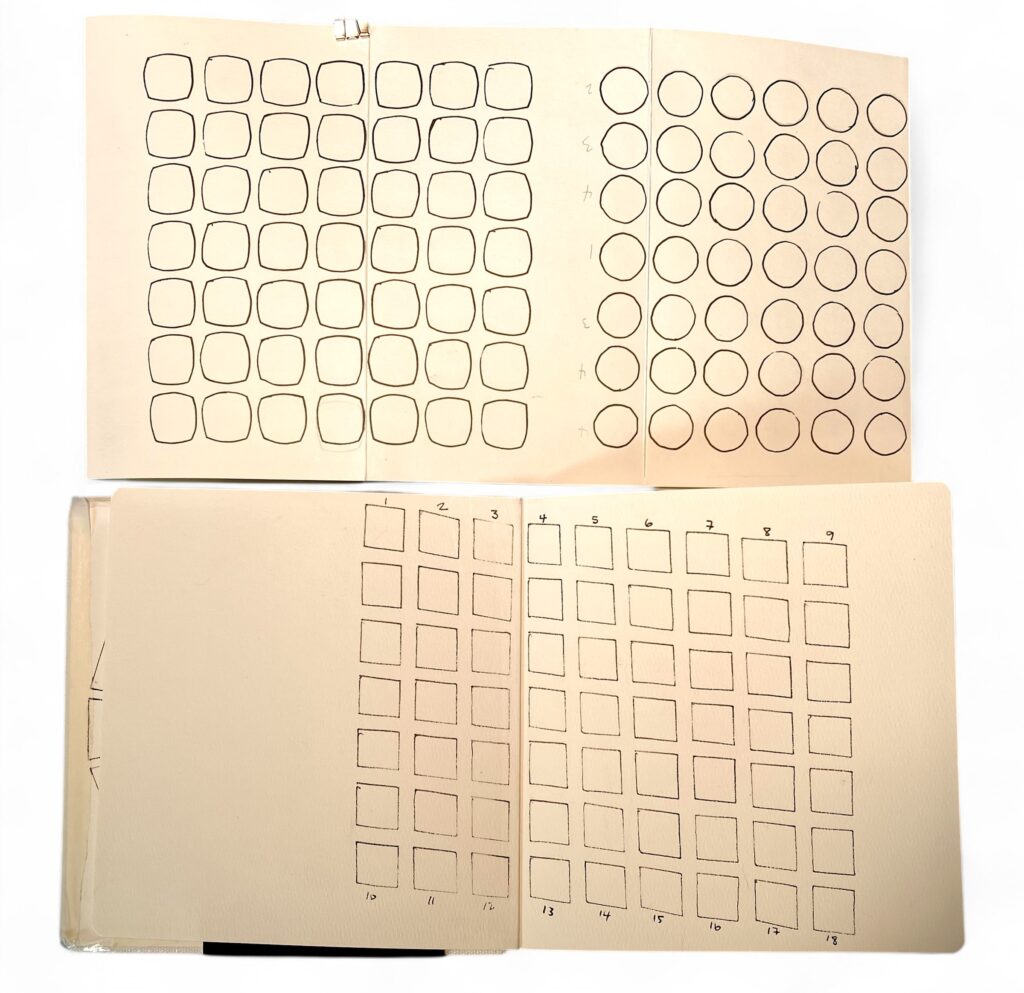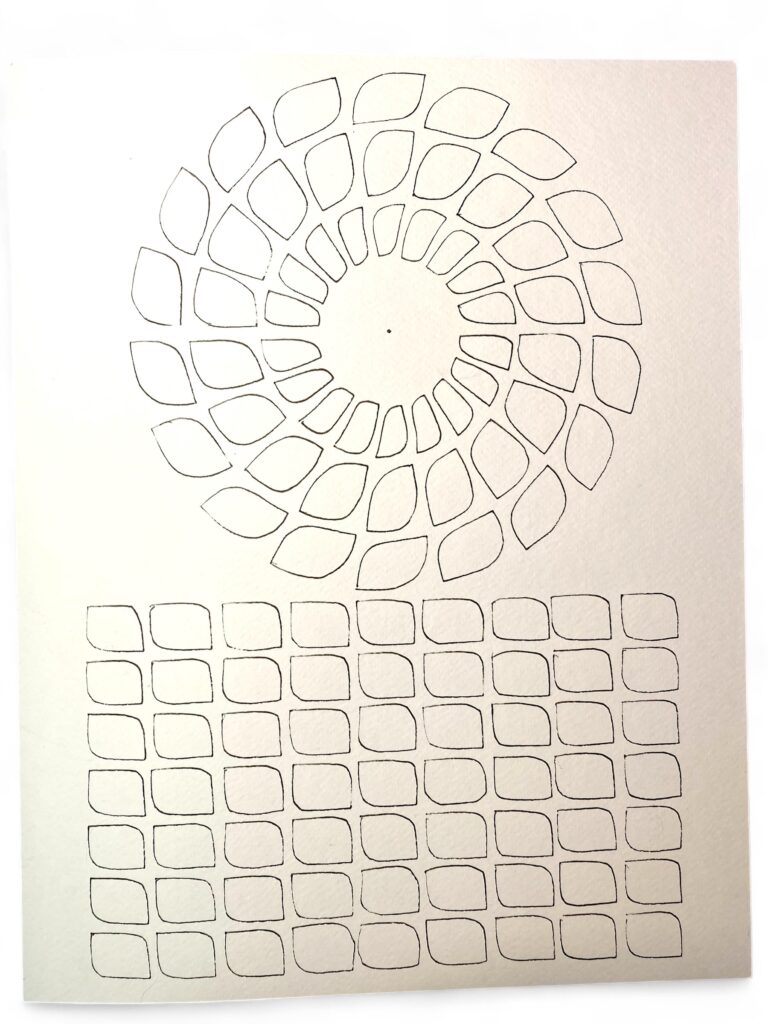The ideal ColourJot grid arrangement is 7 rows high by 9 columns wide. The template will be traced, repositioned, and traced again, 3 times in total, to accomplish this layout.
1. Position the stencil squarely on the page. Use the top of the stencil to align with the top of the page, and the bottom of the stencil to align with the bottom of the page.
2. If you’re creating a 2-page spread, be aware of the gutter and align your template so that no template openings are over that gutter and you have good spacing on the left and right-hand sides of your colour grid.
5. Trace directly using a .08 Sakura Pigma Micron, or similar fine-tipped, waterproof, permanent marker. There is no need to use a pencil to pre-trace the stencil, as you’ll have to ink it later anyway, so try to do it in one step. It saves time and looks better.
6. Move the template, align with the top of the page and the bottom of the page. Use the previously drawn column as a reference and continue to trace the subsequent columns.
7. Reposition as needed to complete all 9 columns.
5×8” Book or Accordion Layout
When fitting the grid onto a smaller book or accordion, pay close attention to where the gutter or fold of paper is and avoid tracing an opening on it. If you accidentally trace on top of it, it’s not the worst thing, but it will look better if the crease or gutter falls between the shapes to be painted.

11×14” 1-Page Layout
The smallest format that fits both the circle and the grid is 11×14” and 12×16”. Acrylic painters can use Canvas Paper, canvas board, or a watercolour pad. Oil Painters could use a primed canvas pad, a primed canvas board, or Oil Primed Paper like Stonehenge Oil. This larger format is also good for art instructors making samples to share in class.
